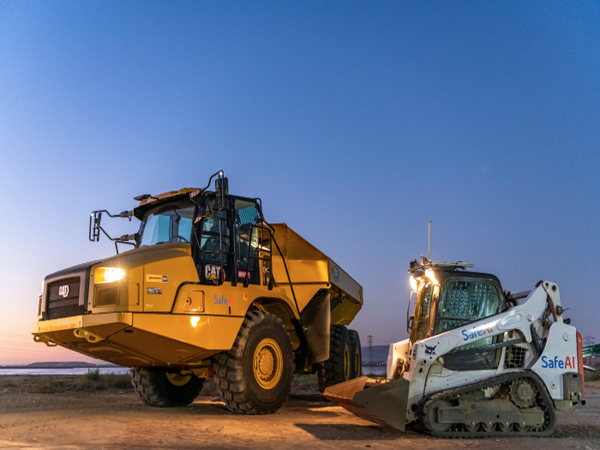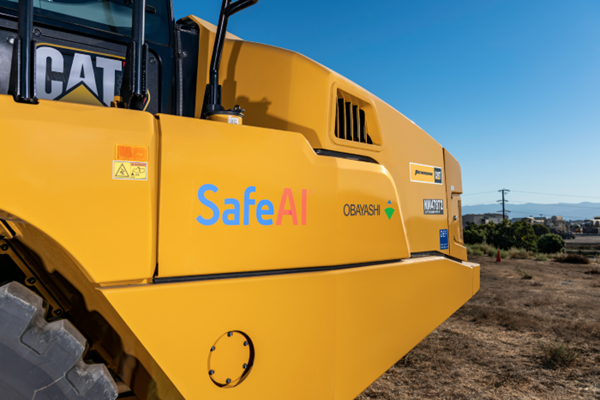This fall, SafeAl announces the upcoming launch of an autonomous construction site and our growing partnership with Obayashi Corporation. In collaboration with Obayashi, they will kick off this November with a pilot program in which a Caterpillar 725 articulated dump truck will autonomously complete a vital on-site function: load-haul-dump cycles.

Obayashi is the Japanese-based global leader of connected construction solutions. By teaming up with one of the largest names in construction, they are demonstrating industrial autonomy in a real-world situation and setting a standard for future autonomous heavy equipment. This pilot follows Obayashi’s investment in SafeAI in November 2019.
Construction represents one of the largest sectors in the global economy. According to the Association of General Contractors, construction creates nearly $1.3 trillion worth of structures each year in America. But the industry also faces a slew of urgent safety concerns (one in five worker deaths last year were in construction), increasing labor shortages, missed deadlines, and rising costs — and COVID-19 has only accelerated these bottlenecks.
Autonomous heavy equipment delivers a safer, more productive solution for the construction industry. By retrofitting existing fleets of industrial equipment with its autonomy platform, the SafeAI team is propelling the industry forward as efficiently and seamlessly as possible. In doing so, they are also paving the way for the future of autonomous technology outside of on-road vehicles.

We are investing in autonomous solutions that we believe will play a critical role in our success both in the near term and also down the road. SafeAI has built a powerful autonomous ecosystem that ushers in safer, more productive worksites,
said Hiroto Sato, COO of Obayashi SVVL (Silicon Valley Ventures & Laboratory). “Throughout our partnership, we look forward to building operational and organizational structure to support this pilot and more deployments like it in the future.”
The importance of this pilot is two-fold. There’s a critical need for autonomy outside of on-road vehicles, and this demonstration is a turning point for real-world application of autonomous technology. Beyond that, this also indicates the beginning of a larger shift in the construction industry — one that involves an increasing interest in connected technologies and commitment to more innovative solutions.
Source: SafeAI
 Copyright 2020 All rights reserved.
Copyright 2020 All rights reserved.